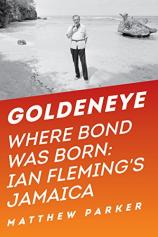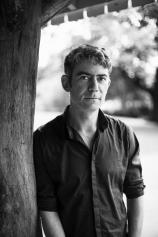Excerpt
Excerpt
Goldeneye: Where Bond Was Born --- Ian Fleming's Jamaica

Excerpted from GOLDENEYE: Where James Bond Was Born --- Ian Fleming’s Jamaica, by Matthew Parker. Copyright © 2015 by Matthew Parker. Reprinted by arrangement with Pegasus Books. All rights reserved.
As the Cold War stepped up, so American security policy towards Latin America and the Caribbean was increasingly directed against the spread of communism. It became ever clearer that the United States would simply not tolerate “communist” regimes popping up in their backyard. For example, in 1953, elections in Guyana saw victory for the People’s Progressive Party, which the American State Department considered too supportive of communism. The colonial authorities in London were unconcerned, but American pressure saw the constitution suspended, a state of emergency declared and the colony occupied by British troops. The following year, following arm-twisting, a majority of the Organisation of American States foreign ministers supported a US resolution declaring communism incompatible with the inter-American system. …
In Live and Let Die, written at Goldeneye in February and March 1953, the action takes place in the context of this fear of communist infiltration in the Caribbean. If the fantastical elements of the story are stripped away, effectively Bond’s mission is to defeat a communist agent established in Jamaica. But, interestingly, Fleming seems rather half-hearted about this fear. In the novel, we are told that Bond had been on a “long assignment” in Jamaica just after the war, “when the Communist headquarters in Cuba was trying to infiltrate the Jamaican labor unions.” We are given no more details except a very curious comment from Bond that “It had been an untidy and inconclusive job.” This is immediately followed by the reader learning that he was very pleased to be back in Jamaica. Earlier, we hear from the heroine Solitaire that Cuban and communist agents are actually controlled out of US territory—Florida and Harlem. As will emerge in the later novels, sometimes Fleming’s anti-Americanism even trumps his anti-communism. The greatest threat to his Jamaica was not the Soviet Union, but Uncle Sam.
The novel that emerged from this time on the island is probably Fleming’s best. Certainly it is the book that establishes the winning formula. Live and Let Die is tightly plotted and well paced, with the end of each short chapter dragging the reader on to the next. Raymond Carver would call it “forceful and driving.” Fleming’s experiences of the Goldeneye reef provide inspiration for Bond’s first underwater sequence, superbly done. The book’s climactic scene is thriller writing of the highest order: Mr. Big, inspired by Henry Morgan’s way of dealing with enemies, undertakes Bond’s destruction by dragging him and Solitaire behind a boat across the razor-sharp tropical reef.
The story is framed by the Cold War and contains a nod to modern Jamaica with the mention of the strategic importance of the bauxite. But with its lost pirate treasure, sharks and killer centipedes and black magic, it is really an old-fashioned Boy’s Own adventure story. One American reviewer would call it a “lurid meller contrived by mixing equal parts of Oppenheim and Spillane.” Fleming concedes this with his soon-to-be customary knowing look to the reader: Bond descries his mission as an “adventure”; one villain looks “like the bad man in a film about poker-players and gold mines”; Bond’s Jamaica colleague Strangways, on hearing that the heroine needs rescuing, exclaims, “Sort of damsel in distress? Good show!”
The villain is Mr. Big, a “half negro and half French” Harlem gangster and SMERSH operative with a grotesquely enormous head, whose skin is “grey-black, taut and shining like the face of a week-old corpse in the river.” Literally larger than life, he is the model for all the classic Bond villains—a “raving megalomaniac,” hoping “to ultimately win recognition in the history of our times.” Mr. Big is smuggling seventeenth-century gold coins from Jamaica to the US to fund Soviet spy activities there and clearly make a lot of money for his organization. The gold is from “one of the most valuable treasure troves in history,” belonging to “Bloody Morgan, the pirate,” the fruits, Fleming delights in mentioning, “of countless raids on Hispaniola, of the capture of innumerable treasure-ships sailing for The Plate, of the sacking of Panama and the looting of Maracaibo.”
Mr. Big runs a huge “black network” in the United States and the Caribbean, keeping order through terror tactics. The heroine, Solitaire, is a white Haitian Creole beauty with “a face born to command. The face of the daughter of a French Colonial slave owner.” Bond, betraying his weakness for romantic West Indian stereotypes, vividly imagines her past: “a lonely childhood on some great decaying plantation, an echoing ‘Great House’ slowly falling into disrepair and being encouraged on by the luxuriance of the tropics.”
Uniquely for the Bond novels, Live and Let Die contains supernatural elements. Solitaire says that Mr. Big has “great psychic power.” He had been “initiated into Voodoo as a child” and has “originated an underground Voodoo temple in Harlem.” Now he is the head of the Black Widow cult and believed by that cult to be the Zombie of Baron Samedi, “the most dreadful spirit in the whole of Voodooism”—impossible to kill because he is dead already. Briefing Bond about the cult, M tells him that it will “frighten the daylights out of you.”
Bond takes this seriously, reading up on Haitian voodoo in Patrick Lee Fermor’s The Traveller’s Tree. When he is interrupted, “it took him minutes to forget the atmosphere, heavy with terror and the occult, that had surrounded him as he read.”
Mr. Big’s voodoo is shown to be a sham employed to keep local Jamaicans away from his island and to terrify his American black network into obedience. (François Duvalier, who became president of Haiti four years later, would also claim to be linked to Baron Samedi for similar motives.) However, in the case of the novel’s heroine, Solitaire, Fleming is more equivocal. Solitaire has been kept by Mr. Big as he believes she has the power of telepathy, and can tell when one of his enemies is lying. As they flee south on the train, Bond asks her is she really does have “second sight.” “Yes, I hate it. Or something very like it,” she replies. Though she criticizes Haiti for being “riddled with Voodoo superstitions,” she also admits to her “half-belief in them.” For his part, Bond learns to respect “the extraordinary power of her intuitions.”
Goldeneye: Where Bond Was Born --- Ian Fleming's Jamaica
- Genres: Biography, Nonfiction
- paperback: 264 pages
- Publisher: Pegasus Books
- ISBN-10: 1681771578
- ISBN-13: 9781681771571




